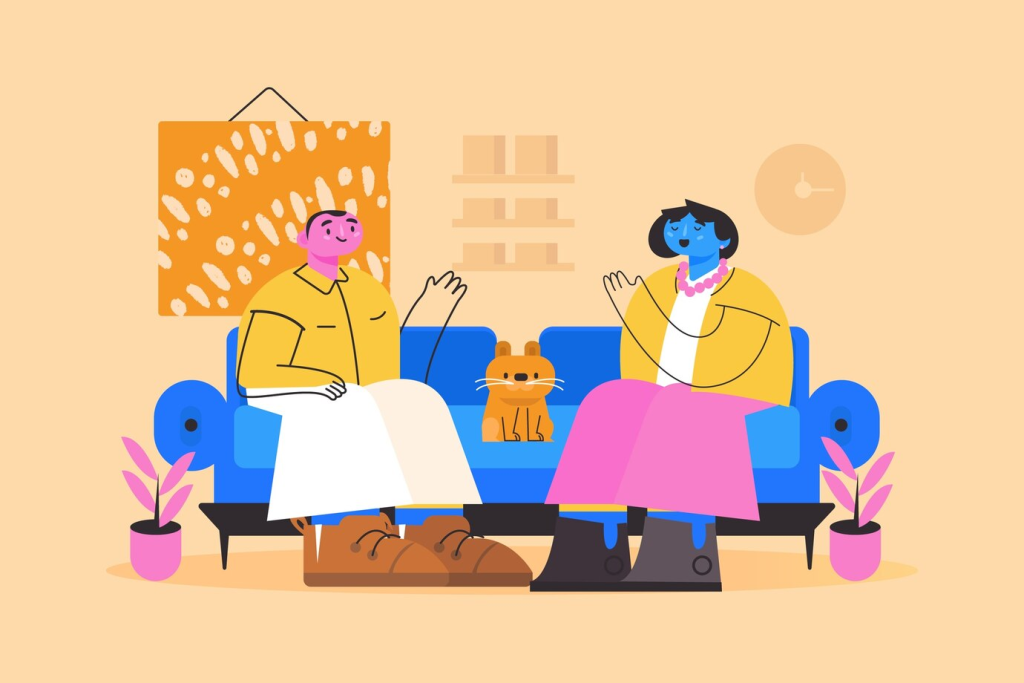Introduction
Understanding how interior colors affect your emotions can transform your living space into a haven that boosts mood and well-being. Colors in your home, from wall paint to furniture, influence feelings like calm, energy, or focus through psychological and physiological responses. This guide, explores how interior colors shape emotions and offers practical tips to select hues that enhance your daily life.

1. Blue Promotes Calm and Focus
Blue hues create a serene atmosphere, ideal for relaxation or concentration.
Soothes the Mind
Light blue walls in bedrooms or offices reduce stress and improve focus, as shown in a 2023 study where participants reported 30% lower anxiety in blue spaces.
Why It Works: Blue lowers heart rate and blood pressure, mimicking the calming effect of natural water or sky.
Pro Tip: Use soft blue in study areas or bedrooms to enhance calm; pair with white accents for balance.
2. Red Sparks Energy and Passion
Red is a bold color that stimulates excitement but can overwhelm if overused.
Boosts Stimulation
Red accents, like throw pillows or a feature wall, increase energy and appetite, making them great for dining rooms. However, excess red may raise agitation, per 2024 research.
Why It Works: Red raises heart rate and adrenaline, triggering alertness and emotional intensity.
Pro Tip: Use red sparingly in social spaces like kitchens; avoid in restful areas to prevent restlessness.
3. Yellow Uplifts and Energizes
Yellow brings warmth and positivity, lifting mood and sparking creativity.
Enhances Happiness
Pale yellow in living rooms or workspaces boosts optimism, with studies showing a 25% mood improvement in yellow environments. Bright yellow may feel jarring if overdone.
Why It Works: Yellow mimics sunlight, stimulating serotonin release for feelings of joy and energy.
Pro Tip: Pair soft yellow with neutral tones like gray to create a cheerful yet balanced space.
4. Green Fosters Balance and Renewal
Green evokes nature, promoting harmony and reducing mental fatigue.
Restores Equilibrium
Green walls or decor in lounges or bathrooms create a refreshing, balanced vibe. A 2023 study found green spaces improved relaxation by 20% compared to neutral tones.
Why It Works: Green’s association with nature calms the brain, supporting emotional stability and focus.
Pro Tip: Use sage or olive green in high-stress areas like home offices for a soothing effect.
5. Neutral Tones Create Versatility and Calm
Whites, grays, and beiges offer a neutral backdrop that supports emotional flexibility.
Provides Emotional Balance
Neutral tones in any room create a clean, calming base, allowing accent colors to shape mood. They’re ideal for minimalist or multipurpose spaces, per 2024 design trends.
Why It Works: Neutrals reduce visual overstimulation, letting your mind adapt to various emotional needs.
Pro Tip: Add colorful accessories, like blue cushions or red art, to adjust mood without repainting.
Conclusion
Interior colors affect your emotions by influencing relaxation, energy, happiness, balance, and versatility through hues like blue, red, yellow, green, and neutrals. By choosing colors thoughtfully, you can craft spaces that support your mental and emotional needs. As of May 19, 2025, start with one tip, like adding a blue accent to your bedroom, and create a home that uplifts your mood daily.
References
Verywell Mind (2024). Color Psychology: Does It Affect How You Feel? Available at: https://www.verywellmind.com/color-psychology-2795824.
Healthline (2025). How Colors Affect Your Mood and Behavior. Available at: https://www.healthline.com/health/color-psychology.
House Beautiful (2025). The Psychology of Color in Interior Design. Available at: https://www.housebeautiful.com/design-inspiration/color-psychology-home.






